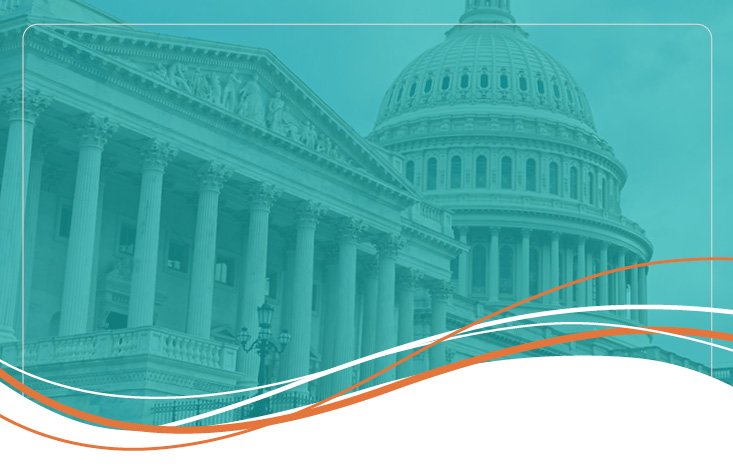PRIORITIZING CRUCIAL HEALTHCARE IN RURAL COMMUNITIES: Urgent Needs and Opportunities for Growth

Rural hospitals are a lifeline to essential healthcare for countless communities throughout the U.S., but many rural providers are struggling to survive the COVID-19 pandemic. Although challenges that Medicaid programs have historically faced in rural areas have generally worsened during the public health emergency (PHE), it has helped shine a brighter light on areas that can be improved. One recent development is CMS’ proposed Conditions of Participation to classify qualifying providers as Rural Emergency Hospitals and provide them with more robust support. This proposed rule aims to address some of the challenges described below and to improve access to high-quality care in rural areas through Medicaid.
Rural providers play a unique role as safety-net providers, delivering physical and mental healthcare across the care spectrum and often without the availability of specialists to outsource treatment. When specialty care is not available, patients are forced to seek treatment elsewhere. This dynamic is worsened by the narrow scope of services potentially offered, the distance from a healthcare facility, and associated transportation challenges—all of which present further obstacles to improving population health in rural communities. Combined with a lack of consistent primary care, these circumstances mean that addressing chronic conditions and other health needs, such as substance use disorder, can be even more difficult. While these challenges are common to both rural and urban areas, the solutions they require are often very different.
Historical Challenges in Rural Health
RECRUITING AND RETAINING STAFF. Staff shortages continue to be a major challenge across the healthcare spectrum, and rural hospitals are no less affected. Hospitals face challenges especially in the area of nursing. Not only are there an abundance of vacant nursing positions, but the number of experienced nurses is also dwindling. As more nurses approach retirement, hospitals are losing valuable mentors for training the next-generation workforce.
FINANCIAL STABILITY. In comparison with densely populated areas, rural hospital utilization is significantly lower and therefore results in less revenue. Further, Medicaid reimbursement—which is generally set at a rate much lower than commercial—is a significant source of income for rural hospitals. With smaller margins and reserves than those of larger health systems, other challenges become even more difficult for rural hospitals. Not surprisingly, these financial dilemmas are directly linked to the recruiting challenges discussed above. As such, nursing demand, and the corresponding cost, has dramatically increased during the pandemic and is adding even greater financial pressure to already resource-strapped rural health institutions.
DIVERSE PROVIDER TYPES. The term “rural” encompasses various types of healthcare facilities. For example, a rural hospital could be a small, critical-access facility with a low bed count. It could also refer to a large hospital servicing a wide geographic area as the sole community provider. With no one-size-fits-all approach to supporting rural hospitals facing vastly different challenges, Medicaid directors must often group providers into discrete categories, such as critical versus non-critical access, to prioritize a community’s needs appropriately. Federal laws and regulations also influence how Medicaid interacts with rural providers to ensure access to care for Medicaid members.
The Effects of COVID-19
LIMITED ACUTE CARE. The pandemic has exacerbated the many existing challenges rural health is facing. When providers were unable to offer non-urgent care during the PHE, utilization, which had already been low in rural areas, was further reduced. With narrower operating margins in rural facilities, this crisis led to significant closures. One strategy rural providers had been employing before the PHE was to limit their services to mitigate the financial strain of offering too wide a scope of care without sufficient utilization. For example, some facilities stopped offering inpatient acute care by becoming a nursing facility, urgent care clinic, or behavioral health center. This strategy enabled providers to simultaneously deliver meaningful care and stay afloat financially. However, explosive numbers of hospitalizations during the pandemic made it clear that providing acute care services in rural communities is a necessity.
HEIGHTENED STAFF SHORTAGES. Staffing shortages became even more dire during the pandemic. It became even more challenging to recruit new staff as many workers were leaving healthcare altogether. Rural providers operating as part of a larger health system relied on partnerships for shared resources. However, small, independent facilities were more isolated. Without the infrastructure of a larger system, many of them had no choice but to limit services or close their doors during the PHE.
THE RISE OF TELEMEDICINE. One positive effect of the pandemic was the widespread adoption of telemedicine. Equipment costs and reimbursements for virtual care—the biggest barriers rural providers faced—were largely covered through temporary COVID-19 relief policies. While there remain opportunities for growth (e.g., reliable network access in communities), continued reimbursement for telemedicine beyond the PHE would help improve the delivery of care in rural areas.
Opportunities for Improvement
TARGETED MEDICAID SUPPLEMENTAL PAYMENTS. Partnerships between providers and health systems presents a major opportunity to improve rural healthcare. Economies of scale—sharing staff, technology, and equipment across a coalition of providers—can help simultaneously lower costs and increase access to high-quality care in rural communities. Since this approach has been effective for many rural healthcare facilities during the pandemic, continuing to broaden those partnerships could further help rural providers. Maximizing in areas where utilization is higher can help a health system’s smaller facilities afford to continue delivering care and may help subsidize access to care in less populated or more isolated areas.
VALUE-BASED CONTRACTING REQUIREMENTS. Medicaid is uniquely positioned to drive care to rural areas experiencing this unique blend of challenges. Medicaid managed care in particular can enable state plans and providers work in unison towards shared healthcare goals. State Medicaid directors have multiple mechanisms at their disposal to help ensure rural areas are not overlooked, including contractual requirements that ensure appropriate emphasis and accountability related to providing rural healthcare. Additionally, value-based purchasing agreements and supplemental payment programs can be implemented that tie funding to performance metrics to incentivize providers and improve outcomes in targeted focus areas. Designing and implementing new Medicaid supplemental payment programs can help create new partnerships and enhance existing ones by making funding more readily available to providers while preserving—and perhaps increasing—access to high-quality care. Medicaid programs have the flexibility to address these challenges in different ways that align the challenges in their states. Medicaid has also been the recipient of unprecedented resources to confront the PHE as well as the related issues of equity, behavioral health, and other aspects. As such, Medicaid is uniquely positioned to drive system transformation and improve rural healthcare.
It is important to note the considerations outlined above generally describe rural hospitals serving Medicaid populations and do not explore the unique factors affecting tribal communities, which are often another important aspect of rural health.





